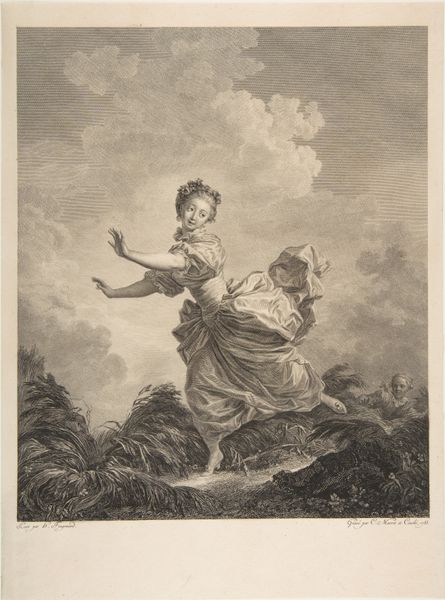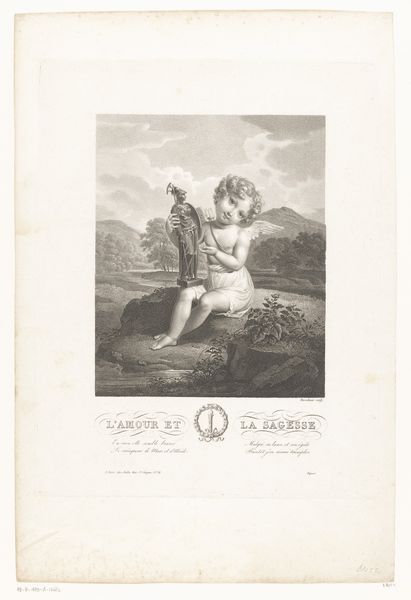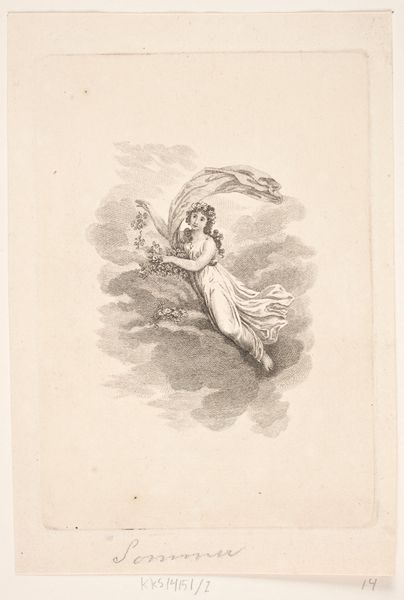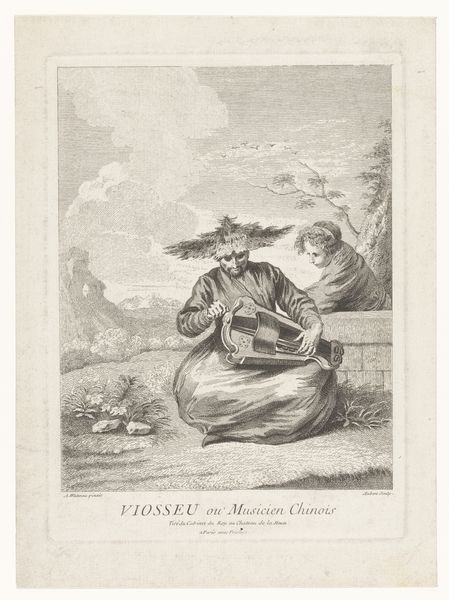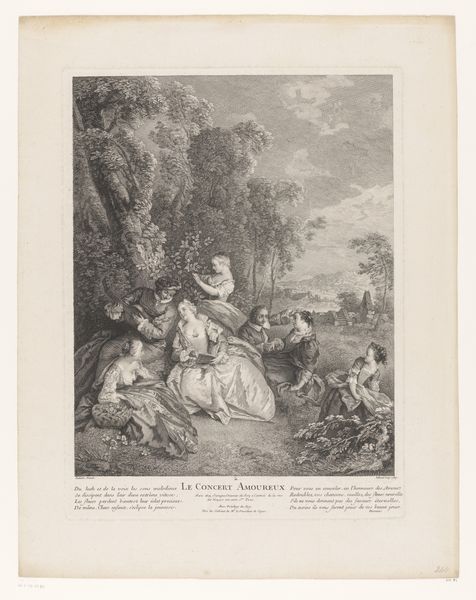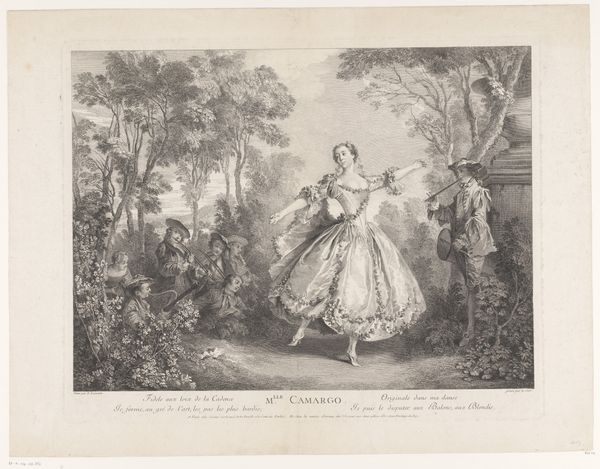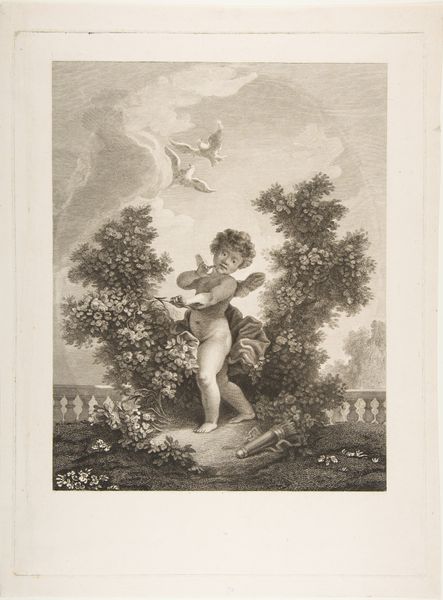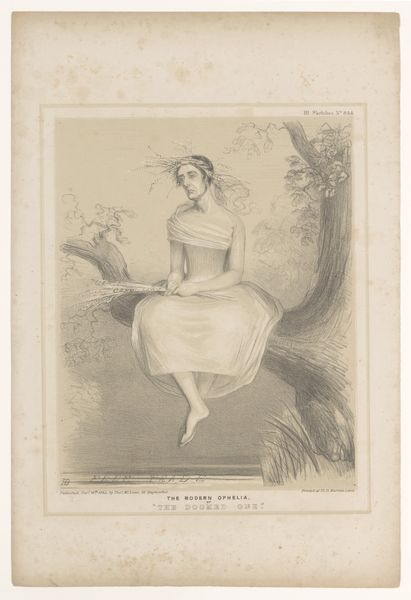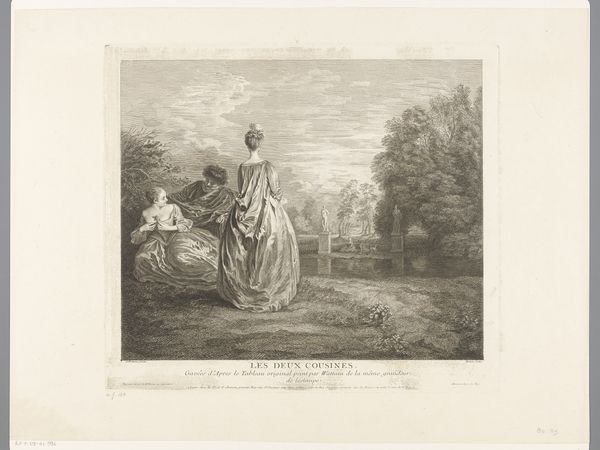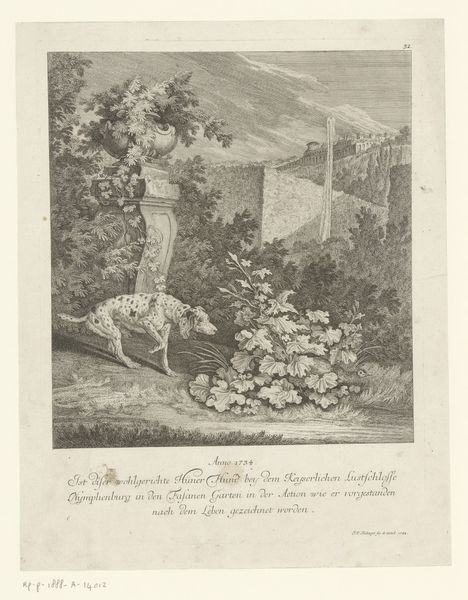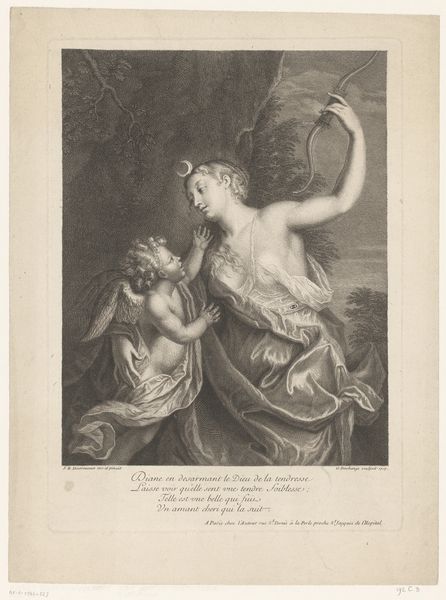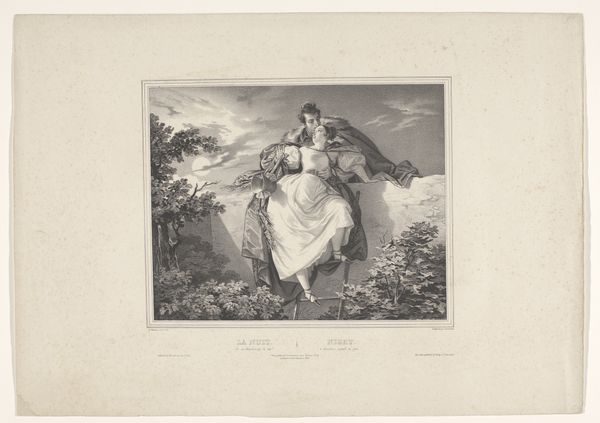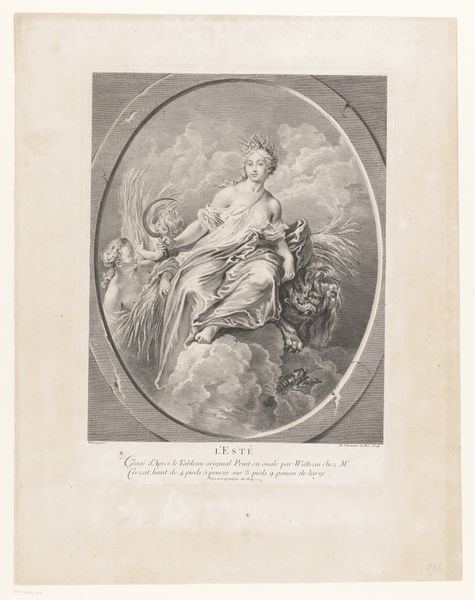
drawing, print, etching, engraving
#
drawing
#
water colours
# print
#
etching
#
landscape
#
figuration
#
romanticism
#
genre-painting
#
history-painting
#
engraving
Dimensions: 293 × 246 mm (image); 372 × 289 mm (plate); 488 × 374 mm (sheet)
Copyright: Public Domain
Jacques Couché created this print called "The Escape of Dessein," sometime around the late 18th century in France. It presents us with an allegorical scene that speaks volumes about the values and anxieties of its time. Here we see a woman, elegantly dressed, fleeing across a rugged landscape, presumably representing ‘Dessein,’ which means design or drawing in French. What could this escape signify? In the 1700s, the French Royal Academy of Painting and Sculpture was at its peak, setting strict standards for art. 'Dessein' was considered the foundation of good art. The print might be a commentary on the shifting artistic landscape of the time. Perhaps Couché is playfully suggesting that 'Dessein' is escaping the confines of academic dogma. Or it could be an allegory for the artist's own struggle for creative freedom. To truly understand a work like this, we need to delve into the art criticism, the social debates, and the institutional structures of the time. Only then can we begin to appreciate the full richness of its meaning.
Comments
No comments
Be the first to comment and join the conversation on the ultimate creative platform.
